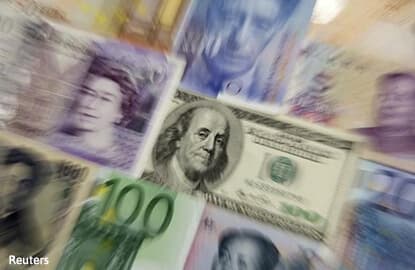
SINGAPORE (Nov 17): Currencies used to be influenced by a number of different factors, political, structural and cyclical. However, HSBC FX Strategy now believes the dominant driver is politics.
This comes after bond markets were bought out by central banks, companies were driven to issue higher dividends to appease yield-hungry investors in equity markets, and central banks had extremely low or negative interest rates.
That leaves the foreign exchange market as the only outlet for disgruntled investors to react to political news.
So what can investors expect of global currencies?
In a recent report, HSBC expects the US dollar to strengthen, amid growing uncertainties and a flight to safety in liquidity, saying there is no currency more liquid than the USD.
On the other hand, HSBC remains bearish on the GBP because of the political challenges posed by Brexit. “We believe that political uncertainty will curb foreign investment from funding the current account deficit, which means GBP will need to keep adjusting lower”.
What about China which has been singled out by Trump as a “currency manipulator”.
For now, the brokerage expects the USD-RMB currency pair to track the broader USD passively, while the RMB index remains stable.
“However, this could be short-lived if Trump indicates that he would go through with his 45% tariff proposal for imports from China,” says HSBC. “Markets will now be hypersensitive to what Trump says about China and the RMB.”
As such, HSBC is raising its USD-RMB forecasts from 6.80 to 6.90 for end-2016 and from 6.90 to 7.20 for end-2017. While HSBC notes that more clarity is needed on Trump’s policies, the investment bank believes it is still possible to avoid a major trade conflict or a currency war.
For the Euro and USD currency pair, the HSBC FX team expects the stalemate between political difficulties in Europe and the US to also lead to the lack of a strong direction for the currency pair, and estimates EUR-USD to be at 1.05 at end 2016, and increase to 1.10 for 2017.
JPY could see more weakness, due to the possibility of a US-China trade war, a weaker RMB, and higher US rates. HSBC estimates USD-JPY will increase to 110.
Higher political risks for Canada could impact its currency and USD-CAD would increase to 1.45 during 2017.
In Asia, the medium-to-higher yielding currencies like IDR and MYR are starting to see pressure from outflows of foreign investment, while lower yielding currencies like SGD, KRW and TWD face growth risks from Trump’s protectionistic policy slant given their export-dependent economies.
“We see most USD-Asia pairs fluctuating around current elevated levels into year-end. For next year we pencil in further depreciation, although more domestically-oriented currencies are seen holding up somewhat better,” says HSBC. “But we caution against forecasting extremely negative outcomes for Asian currencies, since we do not have clarity on the actual policies the new US administration will truly pass as yet.”
In Central & Eastern Europe, Middle East and Africa, global and local political risks continue to mount. As such, HSBC has raised its USD-TRY forecasts to at 3.25 by end-2016 and 3.60 by end-2017, and its USD-ZAR forecasts to 14.5 by year-end and 16.5 by end-2017.
For Latin America, aggressive implementation of Trump’s campaign promises would lead to lower growth, higher inflation and widening external deficits for the region. HSBC raised its USD-MXN forecasts from 20.5 to 22.0 for end-2016, and from 22.0 to 24.0 for 2017. Its estimates on USD-BRL were also raised from 3.2 to 3.55 for end-2016 and from 3.35 to 3.90 for 2017.
As for gold, HSBC Securities USA’s Chief Precious Metals Analyst James Steel noted that the precious metal and the USD typically have an inverse relationship. However, they have been seen rallying together for a prolonged period of time — during the financial crisis. “We expect the USD to gain further support in the aftermath of Mr Trump’s win,” says Steel. “We think it likely that enhanced uncertainty in addition to supporting the USD, will also buoy gold.”
To that end, Steel estimates that gold could rise to USD1,550/oz by end-2017, with an average of USD1,410/oz.